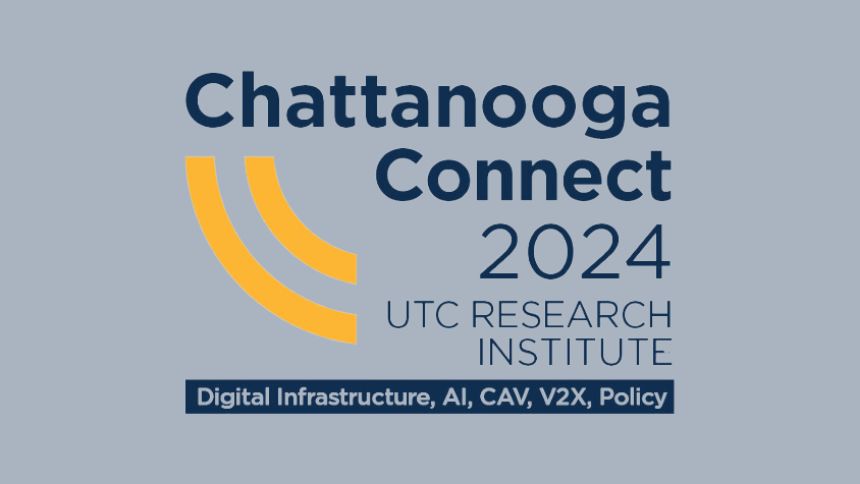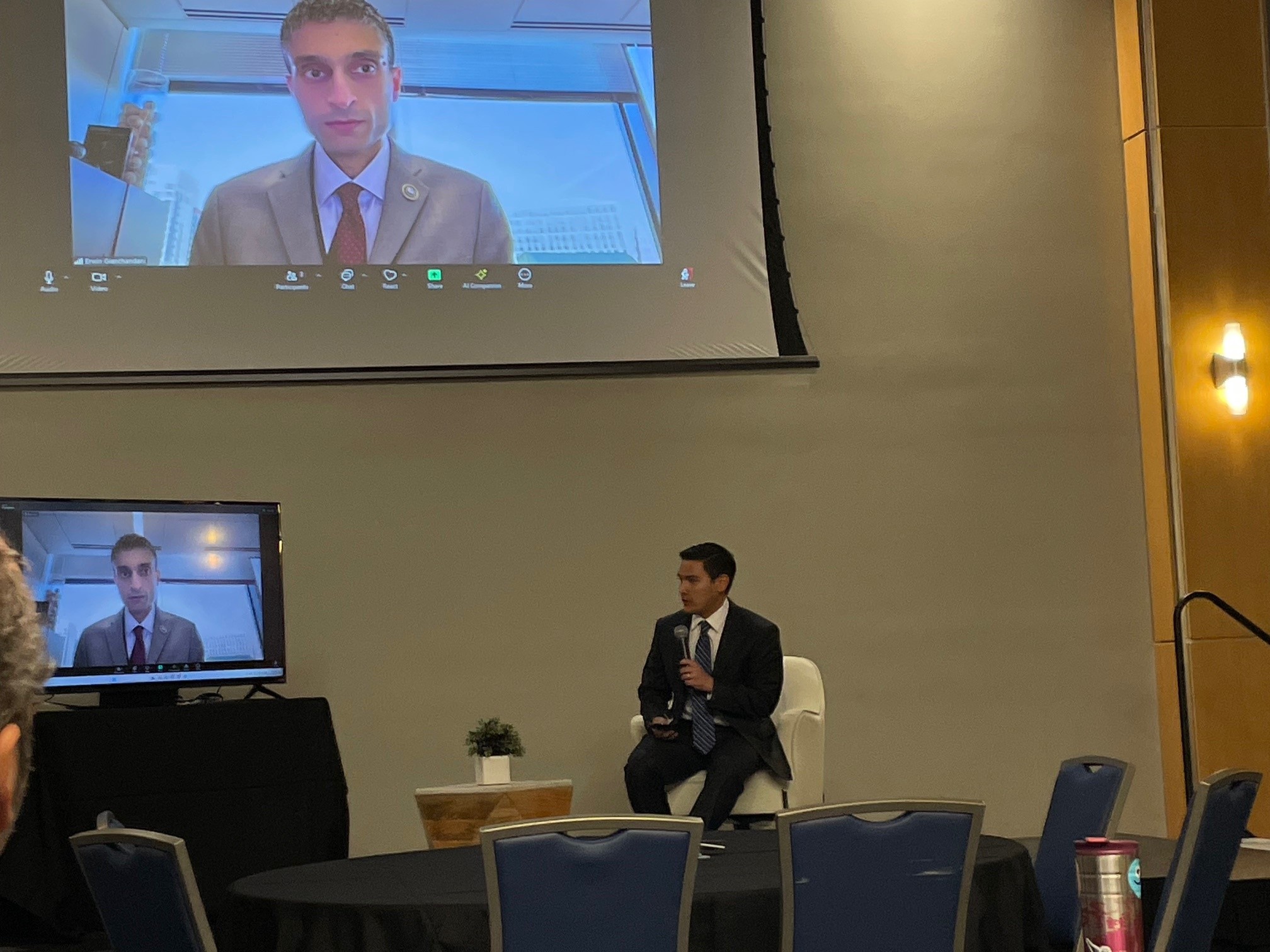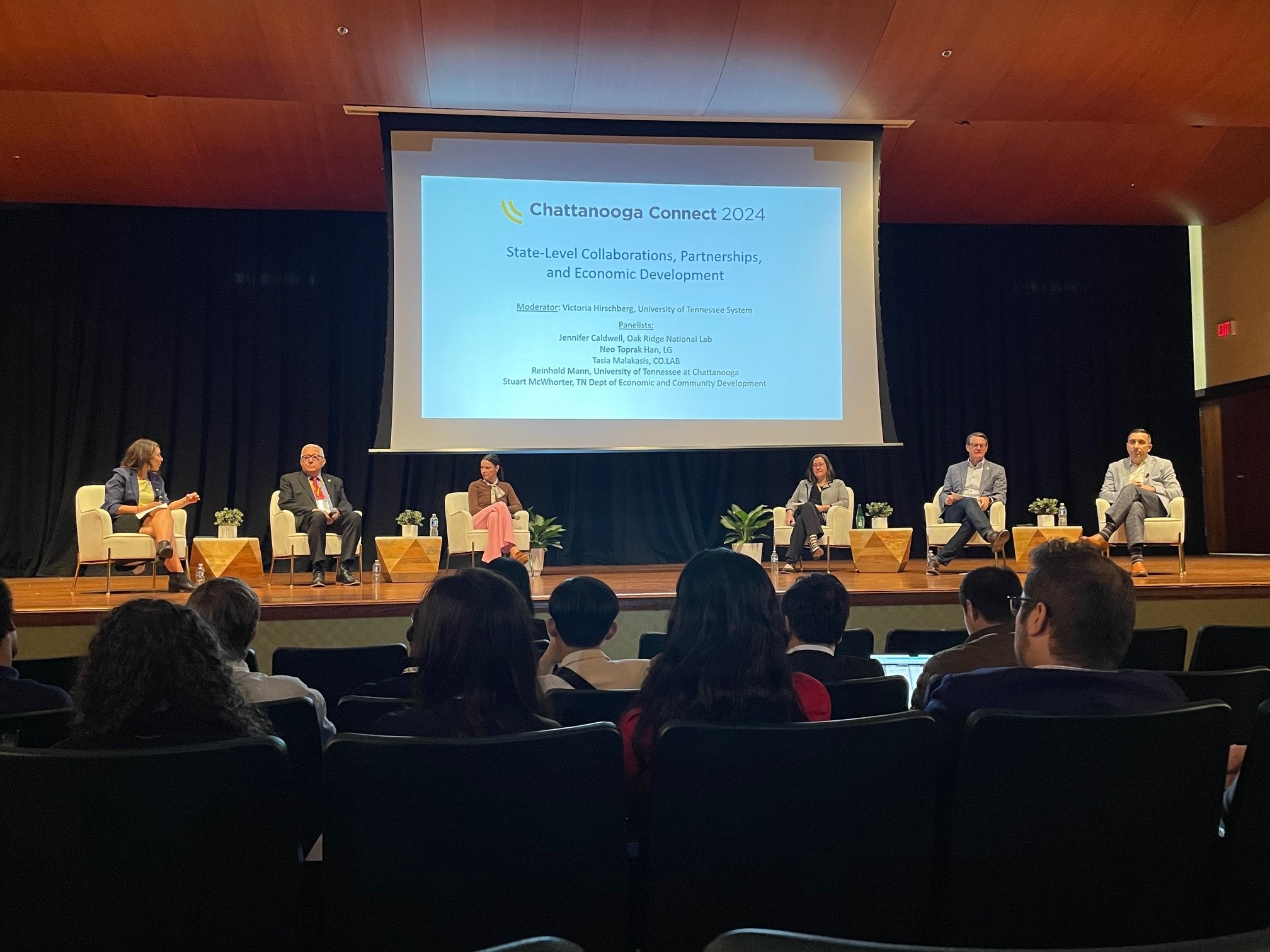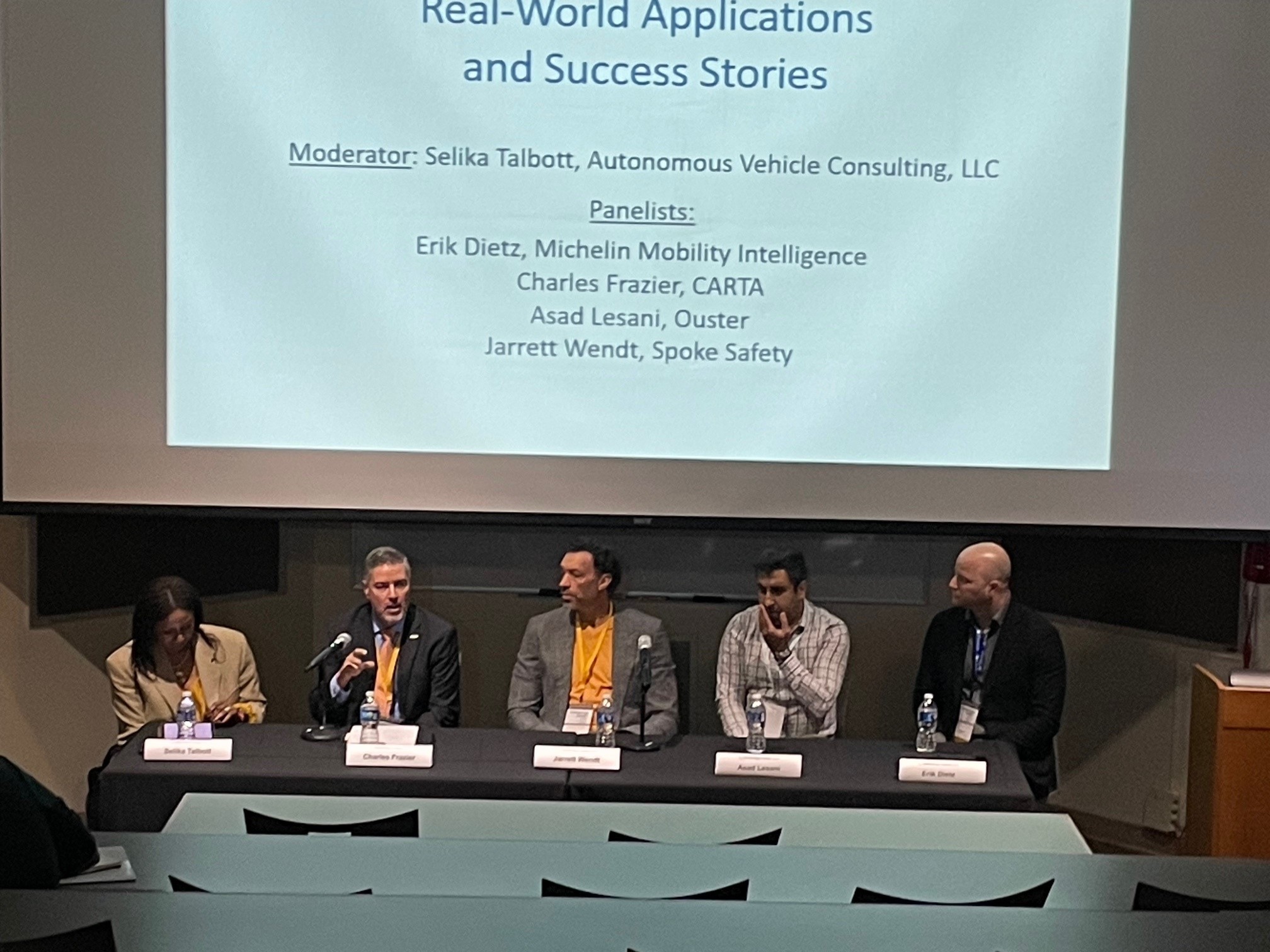
Inaugural “Chattanooga Connect” draws some heavy hitters to the city
The two-day programming ends at noon on Wednesday.
Two keynote addresses and eight other sessions, several concurrent, occurred as the University of Tennessee at Chattanooga’s (UTC) Research Institute hosted the inaugural “Chattanooga Connect” conference on Tuesday in the Gig City. The conference continues until 12 noon Wednesday.
During the opening session, Mina Sartipi, Executive Director of UTC’s Research Institute and founding Director of the UTC Center for Urban Informatics and Progress (CUIP), explained how the conference came about. She told attendees that she found herself constantly traveling through airports to share the work of CUIP and its Smart Corridor+ testbed. The implication was simple: what better way to showcase all that is going on in Chattanooga than have people attend an event hosted in the city.
During that same session, Reinhold Mann, UTC’s Vice Chancellor for Research, reinforced the conference’s title about the importance of connections. “The need for strong connections is so important because of the interdisciplinary nature of the work,” he explained.
Two keynote presentations
The first was delivered by Alastair Cain, Director of Research, Development, and Technology Coordination for the U.S. Department of Transportation (DOT). He told attendees that the Department envisions a people-centered transportation system that provides safe, accessible, viable, equitable and sustainable transportation for all through purpose-driven research and innovation.
Picking-up on the theme of connections, Cain said the federal role is three-fold: (1) convening stakeholders; (2) funding R&D and technology deployment; and (3) developing national-scale strategies and frameworks.
One of the projects that DOT has funded is the Smart Corridor testbed in Chattanooga.
 The second keynote at lunch experienced some audio issues that delayed its start. Erwin Gianchandani, Assistant Director of the Technology, Innovation and Partnerships directorate at the National Foundation (NSF), had to be in Washington, DC, rather than Chattanooga. After a jury-rigged set-up that allowed a solution to the audio problem, Gianchandani engaged in a conversation with Jada Thongnopnua, a former Chief of Staff to Chattanooga Mayor Tim Kelly and now a Program Director at NSF.
The second keynote at lunch experienced some audio issues that delayed its start. Erwin Gianchandani, Assistant Director of the Technology, Innovation and Partnerships directorate at the National Foundation (NSF), had to be in Washington, DC, rather than Chattanooga. After a jury-rigged set-up that allowed a solution to the audio problem, Gianchandani engaged in a conversation with Jada Thongnopnua, a former Chief of Staff to Chattanooga Mayor Tim Kelly and now a Program Director at NSF.
Gianchandani had nothing but positive comments to say about Sartipi and CUIP, which ironically received its first funding from NSF. “There is something to be said for the degree of collaboration” that exists across the city, university, EPB, and other partners, he noted.
Earlier, Gianchandani was asked by Thongnopnua how universities are adapting to a changing role. That prompted the former to say, “It’s a paradigm change.” Whereas NSF’s model was push out the results of research it funded, the need to accelerate innovation and shorten the timeframe to market means it requires a shift that “brings the market to the table.”
 State-level collaborations in the spotlight
State-level collaborations in the spotlight
The session that followed lunch featured representatives of the research sector, entrepreneurial community, state government, Oak Ridge National Laboratory, and private industry.
Mann was again first up on the panel and noted that his first engagement with UTC occurred soon after the Innovation District was announced. That has been followed by the newer quantum work, both of which rely on building a strong and vibrant ecosystem.
- Tasia Malakasis, Chief Executive Officer at The Company Lab, talked about the “Sustainable Mobility Accelerator,” noting that “there’s nothing about this effort that doesn’t rely on collaboration.”
- For Stuart McWhorter, Tennessee’s Commissioner of Economic and Community Development, it was TN GO that allocated $3 million to seven projects to advance the mobility sector.
 Artificial intelligence (AI) was a big part of the conversation
Artificial intelligence (AI) was a big part of the conversation
There were several sessions on AI. We sat in on one where Charles Frazier, Chief Executive Officer of the Chattanooga Area Regional Transportation Authority (CARTA), described a project that was launched for good purposes but had unintended consequences and illustrated the importance of clear communication where AI is involved.
To help its drivers and also improve passenger safety as well as the safety of others driving near CARTA buses, the organization installed cameras and sensors to monitor drivers’ behaviors. The real-time data came into CARTA’s Operations Center and recorded items like running a red light.
“We were introducing a technology that is focused on safety, but it is getting pushback from the drivers,” Frazier said, adding the importance of over-communicating about the purpose of AI projects.
Like what you've read?
Forward to a friend!

